



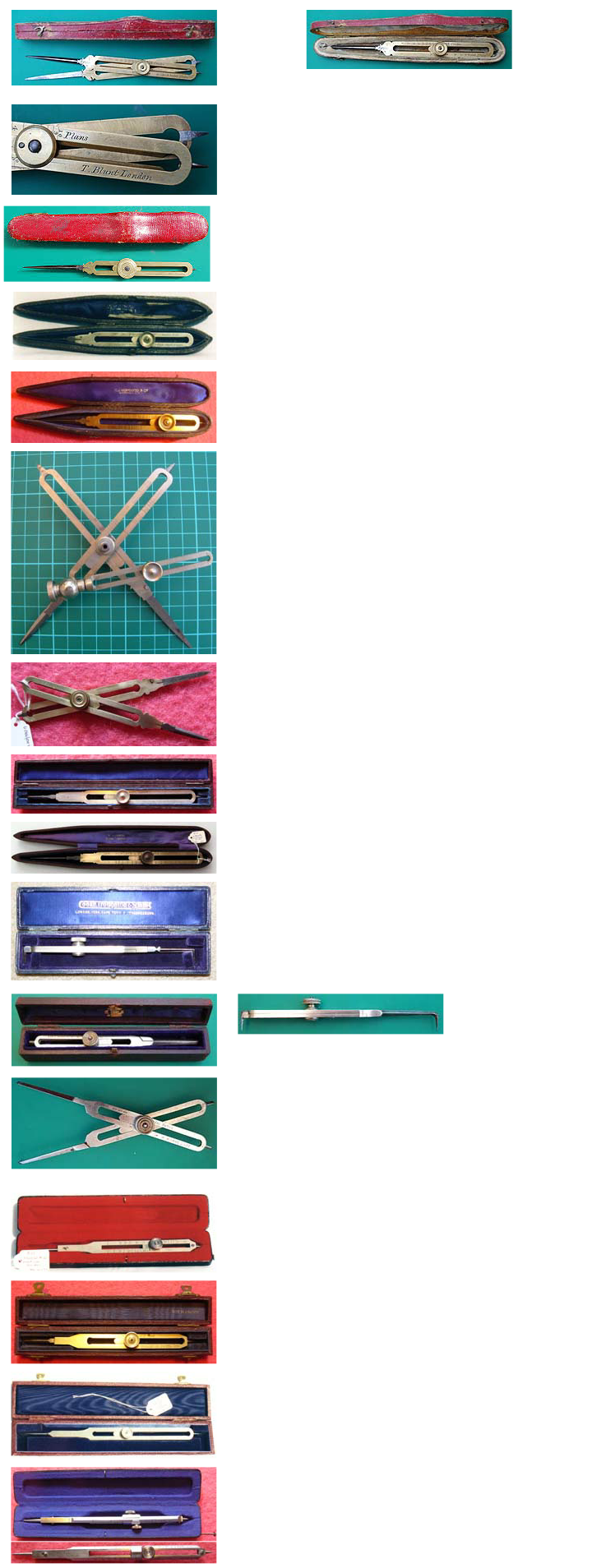

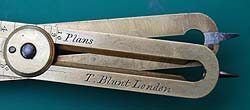
Six inch proportional dividers by T Blunt, London. Thomas Blunt was working from 1760 to 1822. As the instrument is just signed T Blunt London it probably dates to 1794-1800, after his partnership with Edward Nairne had ended (1793) and before the partnership with his son, also Thomas, had begun in 1801.


A six inch, electrum, proportional divider by Newton & Co, 3 Fleet Street, London dating from the nineteenth century with its fitted case. It is fully divided for circles, lines, plans and solids.

Six inch brass proportional dividers by R J Hopgood & Co, London, made for the British government in 1919. They are fully divided for circles, lines, plans and solids.
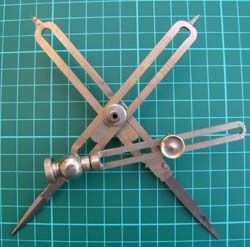
Halden 6 inch proportional divider with micrometer setting bar. The electrum instrument is housed in a mahogany box. It is fully divided for lines, circles, plans and solids. The bar is in the position where it can be used to accurately set the distance between the points. It can be seen in its case on the “J Halden” page.
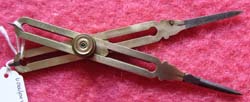
Cary brass six inch proportional dividers. They are fully divided for circles, lines, plans and solids.

Cary HO18 electrum nine inch proportional dividers made for the Royal Navy hydrographic office. Divided for lines only.

G Ashworth twelve inch brass proportional dividers made for the British government. They are fully divided for circles, ratios, plans and solids.
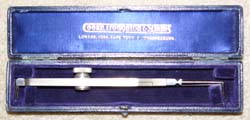
A hook ended proportional divider by Cooke, Troughton & Simms. Made of electrum and steel, it is fully divided for lines, circles, plans and solids, and dates from the middle of the twentieth century. The hook ends meant that the points could be resharpened without affecting the scales on the instrument.

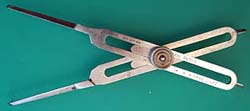
W F Stanley hook ended proportional dividers, made of electrum & steel. These date from the early twentieth century. The case is covered in Morocco leather and lined with blue moire silk and blue velvet. This one is fully divided for lines, linear ratios, plans and solids.

A six inch, proportional divider by Proebster (Joseph Eschenbach) of Germany, model 99-45, dating from the third quarter of the twentieth century. Made of electrum & steel, it is divided for lines and circles. It also has its original instructions.
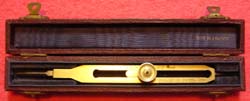
English made gun metal proportional dividers. They are fully divided for circles, lines, plans and solids. Possibly made by J J Threadwell. Mid-twentieth century.
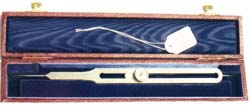
A nine inch, Threadwell, electrum & steel,proportional divider, in mint condition. It dates from c1986. It is fully divided for the rarer combination of circles, plans, lines and linear ratios. The lady I purchased it from was an instrument maker at J J Threadwell's for 42 years, retiring when the firm closed in 1986.

Wichmann (Germany) Nr. 1078 eight inch, stainless steel, rack adjusting proportional dividers, divided for lines and circles.
The proportional dividers shown are a selection from my collection dating from the eighteenth to the twentieth centuries. All the main types are shown. There are also six inch proportional dividers in some of the cases of instruments that I have including ones by W F Stanley and Elliott Bros, shown in their respective pages.
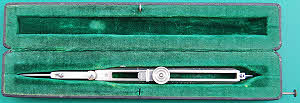
These Eugene Dietzgen no. 1425 proportional dividers were made in Germany and sold by Instruments Ltd in Canada. They are electrum and fully divided. The points are adjustable/replaceable, which is typical of German proportional dividers.

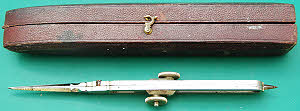
British made 6.7” long proportional divider with rack & pinion setting, fully divided for solids, plans, lines and circles.


6.7” brass proportional divider signed “Berge London late Ramsden”. Matthew Berge took over the business at 199 Picadilly from Jesse Ramsden who died in 1800. He had been apprenticed to Ramsden and then worked for him. He continued to run the business until 1819 when he died aged 67. Ramsden’s dividing engine (made for the Board of Longitude) passed to Berge and then on to his successor.
| Early Sets |
| Traditional Sets |
| Later Sets |
| Major Makers |
| Instruments |
| Miscellanea |
| W F Stanley |
| A G Thornton |
| W H Harling |
| Elliott Bros |
| J Halden |
| Riefler |
| E O Richter |
| Kern, Aarau |
| Keuffel & Esser |
| Compasses |
| Pocket compasses |
| Beam compasses |
| Dividers |
| Proportional dividers |
| Pens |
| Pencils |
| Rules |
| Protractors |
| Squares |
| Parallels |
| Pantographs |
| Sectors |
| Planimeters |
| Map Measurers |
| Miscellaneous |
| Materials Used |
| Who made them |
| Who made these |
| Addiator |
| Addimult |
| Other German |
| USA |
| Miscellaneous |
| Microscopes |
| Barometers |
| Hydrometers & Scales |
| Pedometers |
| Other instruments |
| Workshop Measuring Tools |
| Catalogues & Brochures |
